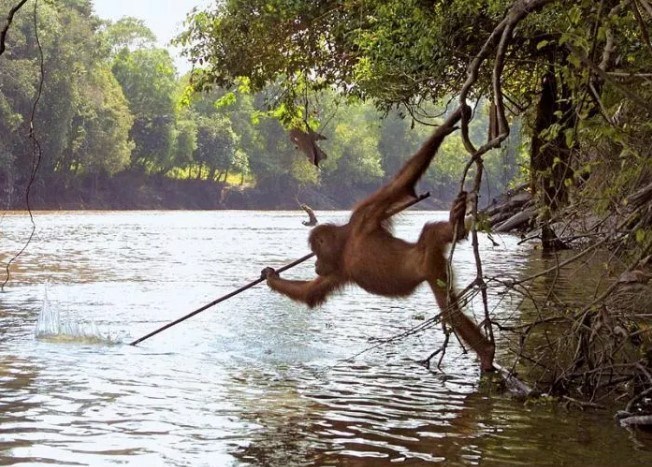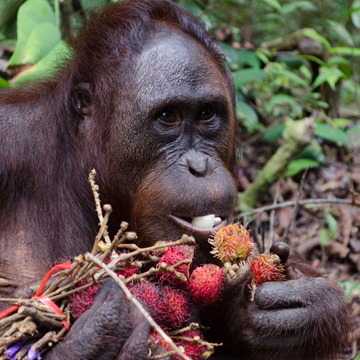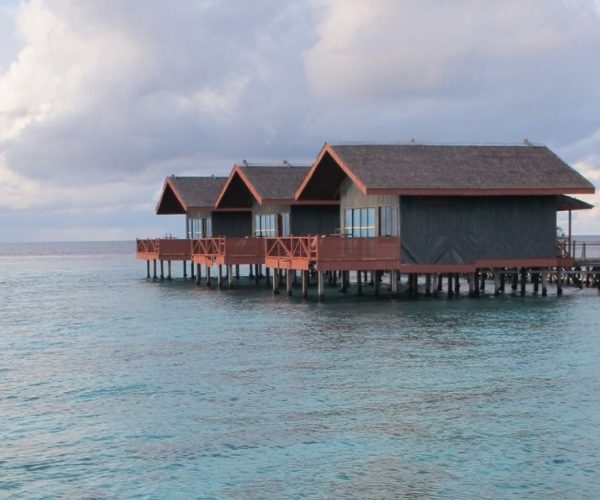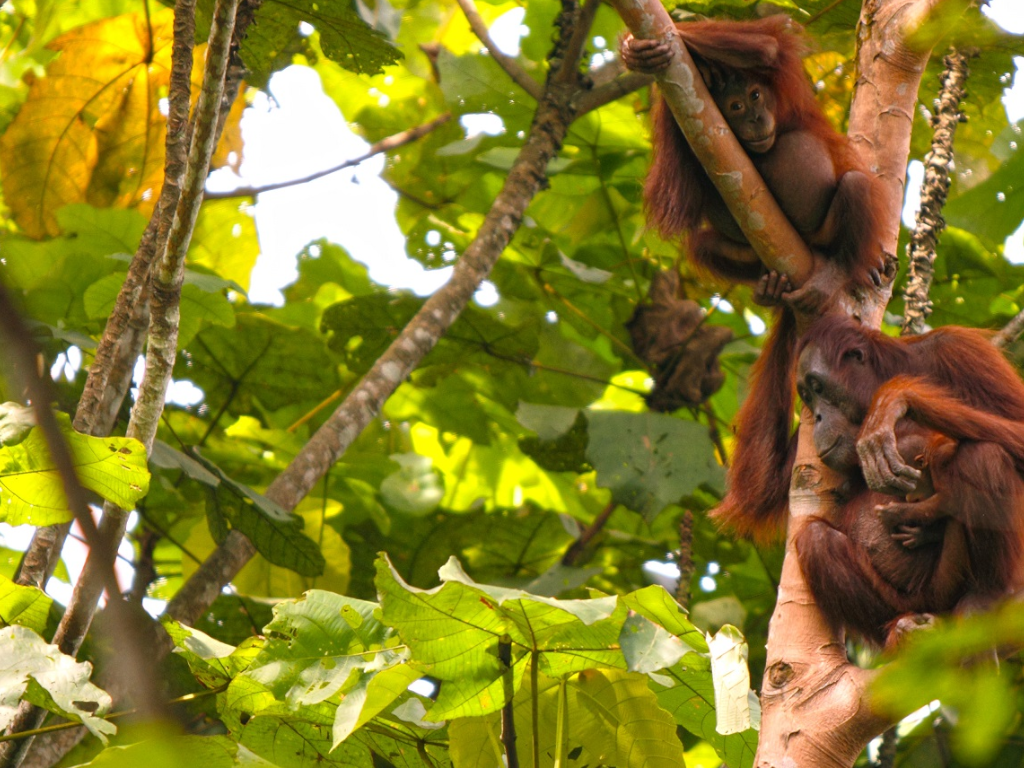Sharing 97 percent of their DNA with humans, orangutans are not only our closest living relatives, they’re also Asia’s only great apes.
The word “orangutan” was derived from the Malay words “orang”, meaning person, and “hutan”, meaning forest. Thus, “orangutan” literally translates to “person of the forest”. Orangutans are native to the rainforest of Indonesia and Malaysia.

There are three different species of orangutan that can be found in Borneo and Sumatra namely the Sumatran, the Bornean, and the recently confirmed new species (as of 2017), the Tapanuli which unfortunately was classified as the most endangered great ape species.
Orangutans are highly intelligent creatures. For instance, they use tools like sticks to get insects out from tree holes, uses leaves as gloves when handling prickly fruits, and are able to build nests out of branches. Below shows a male ape hanging over the water from a tree branch attempting to catch a fish at Kaja Island.

Orangutans love feasting on wild fruit such as mangosteens, figs, and are especially fond of the king of fruits, durian! Curious how they eat it? Well, they pluck immature durians, pry it open with just their hands and teeth, and eat both flesh and seeds, leaving only the seed coats which they spit out after their meal.

Visit Sepilok Rehabilitation Centre to have a better chance of spotting them. Just 25 Km north of Sandakan, this inspiring, world-famous center welcomes orphaned and injured orangutans for rehabilitation before returning them to forest life.
Images by orangutan.com, sustainability-times, orangutan.org





